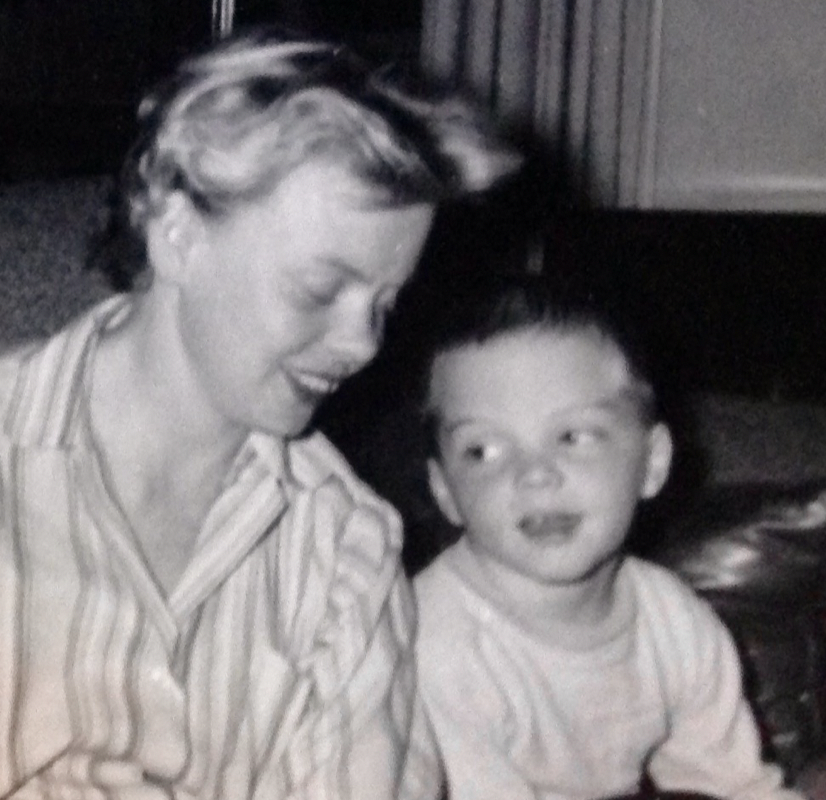Hi, welcome back to the Lam Rim and this is Geshe Michael Roach. We’re ready now to start back into the Lam Rim text. What’s exciting is that we have reached NYIN BCU BDUN PAR. NYIN BCU BDUN PAR means … this is an announcement in the text that we have reached the 17th day of teaching. So, don’t forget that this entire book was a twenty four day teaching by the great Pabongka Rinpoche, who was also a teacher of my teacher’s teacher, and one of the greatest books ever written in Tibetan; maybe the greatest. NYIN BCU BDUN PAR means we’re starting on the record of the 17th day of teachings. That makes us about 80% finished. We started this book I guess over 10 years ago, and personally I’m just enjoying the book. I’m not trying to get through it and trying to finish it by a certain date. I’m not thinking like that. Personally I’m trying to enjoy it and go through it with a lot of pleasure and enjoyment. I don’t know, maybe like how people drink a fine wine. You don’t rush to finish the bottle, you just sit and enjoy it. So we’re enjoying the Lam Rim together, and personally I don’t care how long it takes. I think we should do it very deeply. In this course, we are going to do it deeply.
So we’re about 80% finished. There’s twenty four days total, but don’t forget we finished two of those days already towards the end; and that’s the teaching on meditation and wisdom—emptiness. We did those at the beginning of this 10 years because we wanted to use the meditations during the Lam Rim classes. So we’ve actually finished about 80% of the text. I guess we can finish in about four or five more years. Then I made you a promise for dessert. We’re going to go to the greatest Lam Rim emptiness teaching of ever. The emptiness teaching in this Lam Rim called The Gift of Liberation Thrust into the Palm of Your Hand … the presentation of emptiness is actually not that long. The reason is that Tsongkapa did it so well and so long with Manjushri’s help that I think Pabongka Rinpoche was thinking, “Oh, we don’t have to to cover it that much here”. So after we finish this Lam Rim, we’re going to go study the emptiness chapter and the meditation chapter from Tsongkapa’s Great Book on the Steps of the Path—which is LAM RIM CHEN MO. That will take us about six years. So don’t worry, we have only about ten years left to go. Don’t gobble down this fine wine. Enjoy it. Have fun. It’s a way of life. Lam Rim is not a book, Lam Rim is a way of life for the rest of your life. If you can get Lam Rim teachings for most of your adult life, which I did, you’ll be very grateful. It keeps your life going straight through all the changes that we have in our life. The Lam Rim can be the one steady thing that you keep doing through your whole life.
[su_icon icon=”icon: link” color=”#ff1259″ size=”20″ shape_size=”12″ url=”https://youtu.be/eAP523U1kBM?t=3m49s” target=”blank”]Video[/su_icon]Here we go. NYIN BCU BDUN PAR RGYAL SRAS CHEN PO ZHI BA LHA’I ZHAL NAS means “let’s talk, I’d like to give you a quotation from that great bodhisattva RGYAL SRAS CHEN PO ZHI BA LHA Shantideva”. Here’s the quotation:
,GANG LA SEMS KYI DAM PA RIN CHEN DE,
,SKYES PA DE YI SKU LA PHYAG ‘TSAL ZHING,
,GANG LA GNOD PA BYAS KYANG BDE ‘BREL BA,
,BDE BA’I ‘BYUNG GNAS DE LA SKYABS SU MCHI,
“I bow down to that precious state of mind—to the jewel of that state of mind.” Well, what state of mind are you talking about Shantideva? He says, “there’s a state of mind that if you have it and someone bows down to you, they make incredible good karma”. We talked about it in the coffee shop. If you’re a secret bodhisattva, which you can be, and you’re sitting in the coffee shop and somebody offers you a coffee, they get like a billion years of good karma. It’s so cool. It’s so sexy to be the person who can quietly make other people a billion years of good karma just by buying a coffee from them. But obviously, if they make a prostration to you they will get intense good karma. Now comes controversial part. GANG LA GNOD PA BYAS KYANG BDE ‘BREL BA. Wouldn’t it be cool to be the kind of person that if someone hurt you they would make good karma? What? If someone hurt you they would make good karma. Come on, Geshe-la, we know many examples … if you do a bad thing to a bodhisattva you get bad karma for a long, long time.
Yes, but something cool happens; even if you hurt a bodhisattva you get BDE ‘BREL. BDE ‘BREL means “you make a karmic connection with them”, you see? Even if you yell at a bodhisattva, or you say something bad about this bodhisattva, then of course you make a bad seed but you also make a connection seed with the bodhisattva. It’s very interesting. That will bring you happiness for millions of lifetimes. It’s so cool. So if I can become a bodhisattva, if I can have bodhisattva’s vision, then of course if someone serves me a coffee, secretly I will give them a billion years of good karma. That’s sweet. Oh and even if they yell at me or they call me stupid, “Geshe Michael, you’re stupid!” Then of course, they will make some bad karma, but they will make this karma of connection with a bodhisattva and that karma is much more powerful. They will have this very sweet karma of connection with the bodhisattva. So Shantideva is bowing down to bodhichitta because of its beautiful qualities. It’s like a jewel … it’s like a wish-giving jewel.
[su_icon icon=”icon: link” color=”#ff1259″ size=”20″ shape_size=”12″ url=”https://youtu.be/eAP523U1kBM?t=6m51s” target=”blank”]Video[/su_icon]GANG ZHIG RGYUD LA SKYES PA DE LA SKUR BA ‘DEBS PA SOGS NGAN PA’I ‘BREL BA BZHAG PA TSUN KYANG. Even if you do the worst thing possible to a bodhisattva and you criticize them, spit on them, or you say bad things about them … TSUN KYANG even up to GTAN GYI BDE BAR ‘GOD PAR MDZAD PA’I PHAN YON CAN … that bodhichitta can still give you Buddhahood. Even from making a bad connection with a bodhisattva; because you made a connection with a bodhisattva that bodhichitta is so powerful that somehow it’s going to take those other people to enlightenment when they criticize you. So that’s kind of cool, right?
BYANG CHUB KYI SEMS KYI PHAN YON ‘GA’ ZHIG GSUNGS NAS. This GSUNGS NAS means “our Lama started out the seventeenth day by reminding us of how cool bodhichitta is”. GSUNGS means “he reminded us”. PHAN YON ‘GA’ ZHIG means “he threw in a couple of more benefits about bodhichitta that he did not mention in the previous day”—he added some more. Then what’s the new benefit we have? Insult a bodhisattva and you make a connection to become a Buddha. Yay!
MDOR NA SEMS ‘DIS ZIN PA’I BYAS TSAD CHOS DANG. There’s a very important
word here called ZIN PA … very, very important word. It’s very difficult to translate into English but it means, I don’t know … when you’re in high school and your hormones are flowing strong; which in some men doesn’t finish until you’re 85 or 90. I don’t know, but you fall in love with every girl you see on the street. We were talking about Don Juan, right? No, Don Quixote. Sorry. That he fell in love with this bar girl. What’s her name? I forgot her name. Anyway, if the young man falls in love with this girl in high school, then all the time he’s thinking about her. He’s driving, he’s thinking about … everything reminds him of this new girl he met in the high school and in Tibetan that’s called ZIN PA. His mind is captured by these feelings for the girl. In the bodhisattva’s mind, ZIN PA means captured by this feeling that I would like to become a Buddha for everybody. That’s ZIN PA.
MDOR NA SEMS ‘DIS ZIN PA’I BYAS TSAD CHOS means once you have bodhichitta stuck in your mind—like that cute girl’s picture in your mind—from that time—DE’ANG SANGS RGYAS KYI RGYU THEG CHEN GYI CHOS. SU ‘GRO BA YIN PA’I PHYIR. Then anything you do becomes a cause for your enlightenment. Once you are thinking about this girl—meaning this Buddhahood—then it doesn’t matter what you do, that becomes a cause for Buddhahood. And we have a picture here. It’s a guy taking a walk with his dog, or a lady taking a walk with her husband and a dog.

Just if a bodhisattva has got the bodhisattva state of mind in their mind—bodhisattva vision of dancing between planets—if they have that in their mind, then everything they do is Dharma. That’s really cool. Like you don’t have to go to the temple and read a Medicine Buddha Sutra. Go for a walk with your dog and your husband, that’s Dharma. If you’re thinking about this vision that I would like to dance between many planets and help people, if you’re thinking about that then everything you do—you brush your teeth, I don’t know, you watch Netflix, everything you do becomes Dharma. It’s very beautiful. It’s very, very cool. Let’s go to the next sentence.
[su_icon icon=”icon: link” color=”#ff1259″ size=”20″ shape_size=”12″ url=”https://youtu.be/eAP523U1kBM?t=11m19s” target=”blank”]Video[/su_icon]SGRUB PA NYAMS LEN BYED PA LA. Now he says, “let’s put it in the context of practice”. SGRUB PA NYAMS LEN means “how is this bodhisattva’s vision going to affect your Buddhist practice?” LHA BGSOM SNGAGS BZLAS TZAM LAS BYED RGYU MED PA BZHIN MI BYED PAR. Forget LHA BSGOM … forget meditating on Medicine Buddha. LHA BSGOM—forget doing Medicine Buddha’s mantras. BYED RGYU MED PA BZYIN MI BYED PAR. Even if you don’t do anything, SGRUP PA don’t think about those high, high practices … SGRUB PA NYAMS SU BLANG BYA’I GZHI MA. By the way, this MA Tim is not a negative. It’s the second half of GZHI, it’s interesting. So you have to be careful; it means “the super foundation”, like the “mother foundation”. GZHI MA BYANG CHUB LAM RIM DANG, DE’I NANG NAS KYANG BYANG CHUB KYI SEMS ‘DI LA BYED DGOS KYI. He says, forget secret mantras, forget a meditation on even Medicine Buddha; right now if you focus on this feeling that I would like to dance between the planets and help other beings there. You focus on that feeling and that’s enough for your practice. That’s extremely powerful Vajrayana practice—to love other people enough that you want to dance between a billion planets and help them. Keep that vision in your mind and it’s as powerful as tantra. Keep that vision in your mind.
Then he says in the next sentence, ‘DI MED PA MI TSE RI STONG DU BSKYAL TE RI STONG. RI means “a mountain”. Like when we do the mandala, we say RI’I RGYAL PO RI RAB, which means “the mountain”—Mount Мeru. STONG means “empty”. So, RI STONG means you climb up to the Himalayan mountains, find a cave and you start meditating. GZHAN JI ‘DRA ZHIG BSGOM KHUL BYAS KYANG. Doesn’t matter what you do. By the way, Tim, the KHUL is new for you. K-H-U-L. That means “act like you’re doing something”. Like you go through the motions, that is KHUL. It doesn’t mean “cool”. So when you add it to a verb it means, “yeah yeah, you look like you’re meditating; you look like you went up on a mountain and you’re sitting in a cave, and you look like you’re meditating—you’re going through all the motions”. BYAS KYANG. But, SANGS RGYAS KYI GO ‘PHANG DANG CUNG ZAD KYANG NYE RU MI ‘GRO BAS. If you don’t have this bodhisattva’s vision, you can spend a whole lifetime in a meditation cave in the Himalayas and you will not get closer … NYE RU, you will not get closer to Buddhahood at all. CUNG ZAD You will not get closer to Buddhahood if you don’t have this vision. ‘DI NYID THUGS DAM GYI MTHIL DU GNANG DGOS. So this is an important new word for everybody: THUGS DAM GYI MTHIL. MTHIL means “the palm of your hand” and it also means “the sole of your foot”. This is where you get your wheels when you get the marks of a Buddha, for example on your MTHIL. But in Tibetan, spoken Tibetan, when you say “put it in your palm of your hand”, similar to the title of this book, it means “keep that as your main practice”. There’s something … you got a picture for me?

Yes. Keep this feeling in the palm of your hand. It means THUGS DAM GYI MTHIL. THUGS DAM GYI MTHIL means “keep that as your number one practice”. THUGS DAM means “in the palm of your hand”, in Tibetan it means “keep that vision of you dancing between planets; keep that as your main, main, main practice”. That’s called “the practice that’s in the middle of the palm of your hand”—it’s something you carry around all the time. DE LTA BU’I.
[su_icon icon=”icon: link” color=”#ff1259″ size=”20″ shape_size=”12″ url=”https://youtu.be/eAP523U1kBM?t=15m44s” target=”blank”]Video[/su_icon]Let’s go back to the Tibetan. DE LTA BU’I SEMS DE BSKYED PA LA’ANG, SEMS SBYONG GI MAN NGAG LA LTOS DGOS TSUL SOGS. This is the most beautiful part of this Tibetan. I’m going to say that about a hundred times. If you just know the instructions … you need the instruction manual for how to get bodhichitta, that’s all, he says, “that’s all”! “Look, there’s a one page … there’s a very easy list—you just follow seven instructions and you get there. So let’s do it together, okay? Just seven instructions. You don’t have to meditate for 20 years. There’s just seven easy steps. Just do them and then you get it. MAN NGAG LA LTOS DGOS TSUL means “our Lama impressed on us … just do those”. I’m going to teach you some instructions and you just follow them. KUN SLONG ‘CHOS LUGS MDOR BSDUR SHIG STZAL NAS. Every time that you start a Dharma teaching, you have to get your students into the mood. You have to say, “look, the virus was nothing … four million people, three million people die, it’s nothing; seven billion people die, that’s something!” Eight billion people died, that’s something! So don’t forget, why are we doing Lam Rim? The virus was nothing; three million people are nothing! Seven billion people are going to die if we don’t do something. They’re not going to die from the virus, they’re going to die from getting old and dying. We already had a virus before the virus—it was called “living”. We’re all going to die from it. So he says, don’t forget the motivation—why we are here and why we are studying Lam Rim. Don’t forget that on the seventeenth day. The teacher, Pabongka Rinpoche, reminded us why we were here. So never forget.
SNGON DU JI LTAR SONG BA’I SA BCAD RNAMS GSUNGS RJES. That RJES means “afterwards”. It means “he went through the outline that we covered in the last course, which I just did with you—the ten benefits of bodhichitta. BYANG CHUB KYI SEMS KYI PHAN YON DANG BTANG SNYOMS. He reviewed the ten benefits of this vision of the bodhisattva, which we just did in the last class. BTANG SNYOMS BSGOM PA LA BSKYAR BSHAD MDZAD. And he talked about: you’re going to build this seven steps to bodhichitta, you’re going to build them on upeksha. What’s upeksha, Timothy? Upeksha? Equanimity. Yes. So don’t forget, you’ve got to have equanimity before you can build love on top of it. You have to treat people equally before you can learn to love people. Before you can really learn to love people you have to see people as equal. So he explained it, BSKYAR BSHAD MDZAD means, “he repeated from the last class and then we went on to the new class”.
[su_icon icon=”icon: link” color=”#ff1259″ size=”20″ shape_size=”12″ url=”https://youtu.be/eAP523U1kBM?t=19m09s” target=”blank”]Video[/su_icon]So here’s the new class. DE NAS BYANG CHUB SEMS SBYONG GI MAN NGAG BDUN GYI. DANG PO NI MAR SHES YIN LA. You guys, should learn the word: MAR SHES. MAR SHES in the second line. First part of this second line. MAR SHES. This is what we’re going to focus on today. It’s called MAR SHES. MAR SHES means “realize they are your mother”. This is the first step to developing that bodhisattva’s vision. You have to understand they are your mother—MAR SHES YIN LA. Then he says, ‘DI RGYUD LA SKYE SHIN TU DKA’ ‘DI RGYUD LA SKYE SHIN TU DKA’. It’s extremely difficult to reach. ‘DI RGYUD LA SKYE SHIN TU DKA’. This RGYUD means “mind … to develop this in your mind is extremely difficult”. To really believe that the people around you have been your mother is extremely difficult.
RGYUD LA SKYE DKA’ ZHING, MA SKYES NA DRIN DRAN MA RNAMS MI ‘BYUNG BAS. But if you don’t get past through this first step of the seven, you can forget trying to be a bodhisattva. If you don’t get to the point where you realize that all the people around you have been your mom before, forget being a bodhisattva. Not possible. So, okay, Pabongka Rinpoche says, “look, I know it’s difficult, it’s not easy, but we’ve got to start there and you’ve got to recognize that everyone has been your mother. ‘DI LA NAN TAN ‘BAD DGOS means, “so you got to work hard on this”, okay? You got to focus at the beginning on treating—seeing people have been your mom—that’s all. You have to focus on that at the beginning. And then he says, DE LA RGYU DANG PO MAR SHES NI, SEMS CAN THAMS CAD GNYEN GYI MTHAR THUG GNYEN GYI MTHAR THUG GNYEN means “relation”, like a relative in your family. GNYEN GYI MTHAR THUG means “ultimate relative”, which is your mom.
MAR SHES STE, ‘DI RGYUD LA MA SKYES NA BYANG CHUB SEMS KYI SKAL BA CHAD PA YIN. If you can’t recognize that everybody around you has been your mom, then you don’t have the SKAL BA. What’s that mean, you guys? Do you remember, Jigme? SKAL BA. You don’t have SKAL BA. CHAD means like RDO RJE GCOD PA. What’s that mean? You “cut the possibility of Buddhahood”. If you can’t reach the state of mind where you see that everyone has been your mom, SKAL BA CHAD means “you don’t have the good karma to be a Buddha”. You will never be a Buddha. SKAL BA CHAD. That karma seed is cut in you. You don’t have a choice. You have to work on this idea that everyone has been your mom. The most important one. I love this picture of my mom.

This is me with my mom and… I don’t know … I’ll tell you, I’m sixty eight years old; my mom died over forty years ago. I don’t think about her as much as I used to. I used to think about her all the time. I used to cry all the time. Then slowly, as you get older and older and older, and you start … you don’t think about your mom as much. But if you do think about your mom the point of this meditation is: let’s go back to remembering what our mom did for us. Let’s go back to remembering that everyone has been my mother. He says, GZHAN ZAB MO STONG PA NYID SOGS NI RIGS PA’I SGO RNAM GRANGS MANG PO NAS BSAM CHOG PAS. Look, you can meditate on emptiness, it’s okay. You can learn all the arguments for emptiness. Yes, you can spend your time … RIGS PA’I SGO RNAM GRANGS MANG PO means: you can use logic and reasonable thinking to establish … ZAB MO STONG PA NYID—profound emptiness. CHOG PA means “yes, yes, you can do it”. CHOG PA means “yes, you could spend your time like that”. DE TZAM DU RTOGS PAR MI DKA’ MOD—getting to see that everyone has been your mom is not as hard as that. I admit it’s harder to see emptiness … DE TZAM DU RTOGS PAR MI DKA’ MOD—I understand that seeing emptiness is difficult, and yes if you ask me: is bodhichitta easier or is emptiness easier? I’ve got to say maybe emptiness is very hard, but … ‘DI LA LUNG ZHIG GIS BSAM NA’ANG, BSAM PA’I GTING NAS NGES SHES RNYED PA ZHIG ‘BYING DKA’ LA … I have to say something about recognizing that everyone around you is your mom; it’s not going to be enough to just think about it.
[su_icon icon=”icon: link” color=”#ff1259″ size=”20″ shape_size=”12″ url=”https://youtu.be/eAP523U1kBM?t=24m35s” target=”blank”]Video[/su_icon]You can’t sit there, “oh, Geshe-la said everyone’s been my mom”. So you’re not going to get to bodhichitta that way, it’s not enough. He says, DBANG RNON CHOS KYI RJES ‘BRANG. Those of you who have a high spiritual IQ—RIGS PA—you’re going to have to think your way through this kind of love. You’re going to have to think your way through this kind of love and then you can reach it—but you’ve got to learn to think clearly. Clear thinking is how you’re going to reach this kind of love. Not by saying, “oh, my mom was so beautiful, and I love my mom, and I
feel good about my mom, and I wish that my mom was still alive”. That’s okay, but if you don’t think your way through it, he says, “you will never reach bodhichitta”. You have to think your way to that kind of love—DGOS SHING.
Then he quotes RNAM ‘GREL. RNAM ‘GREL is a book by Master Dharmakirti. It’s called Pramanavarttika. It’s A Commentary on Accurate Perception. It is the mother Buddhist book about Clear Thinking—how to think clearly. In the next picture here you can see smoke coming up out of a forest.

This picture is extremely important for a Buddhist. This picture … if a Buddhist sees this picture they say, “ah, I know what you’re talking about; under that smoke there’s definitely a fire”. In the forest there’s a big fire behind the green trees but we can’t see it, right? All we can see is the smoke. If there’s smoke, there’s fire. In this case in the Lam Rim, the fire means “everyone you ever met in your life was your mom”. That’s the fire. What’s the smoke? We have to look for the smoke. We have to look for the proof that the people around me have been my mom. We have to try to find the proof. The smoke is the proof that there’s a fire. Now what’s the proof that everyone has been my mom? You know, Geshe-la, give me the proof. It’s not enough for the Lama to describe it to you, and it’s not enough to meditate about how much you love your mom, you must understand the reason why everyone has definitely been your mom. There’s no choice. You’ve got to use a special kind of thinking to prove to yourself beyond a doubt that everyone has been your mom, and until you go through that mental exercise it’s hopeless—you won’t be able to get bodhichitta. It’s never going to happen.
[su_icon icon=”icon: link” color=”#ff1259″ size=”20″ shape_size=”12″ url=”https://youtu.be/eAP523U1kBM?t=27m38s” target=”blank”]Video[/su_icon]So now we’re going to go on a big trip in the next class. The next class is a long class, so get some popcorn before you start the next class, and I’m not going to stop. It might take a while, but we’re going to go … he mentions Dharmakirti and he mentions that Dharmakirti proved that everyone has been your mom but he doesn’t give you the whole proof, so guess where we’re going to go? We’re going to go to Dharmakirti and we’re going to go through Dharmakirti’s proof. It’s tough and it’s delicious.
So see you in the next class. We’ll prove that everyone’s been your mom.
See you then.










